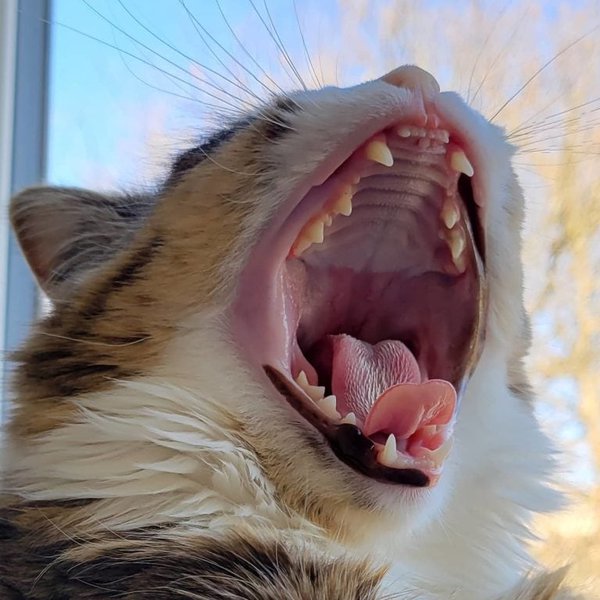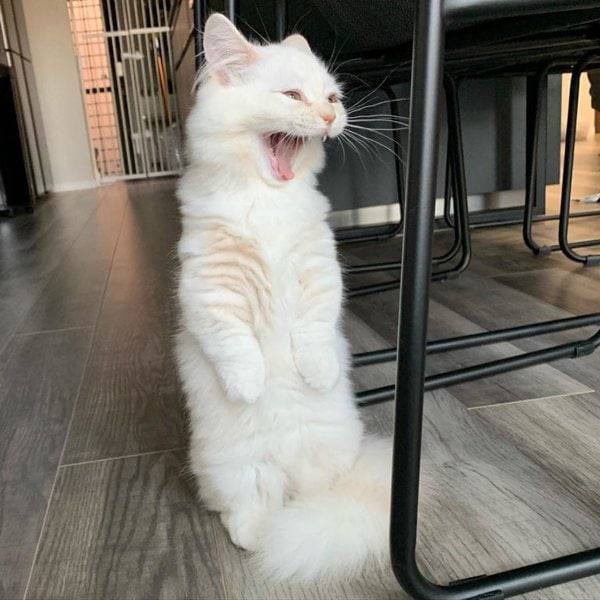If you have an adopted cat whose history is unknown, you’ve definitely at some point wondered how old the kitty is. While it is very difficult to accurately determine the exact age of a cat, there are some pointers that you can use to help you guess a cat’s age.
One of the most reliable ways of telling a cat’s age is to look at their teeth. The number of teeth a cat has and the teeth condition can provide you with important clues about their age. You can also tell a cat’s age by looking at their body size and shape, as well as their eyes, but there are several other ways to estimate a cat’s age. Let’s check them out below.
7. Teeth

Kittens that only have incisors are usually 2 to 3 weeks old, those that have incisors and canines are 3 to 4 weeks old, while those that have premolars are about 4 to 6 weeks old. If a kitten is yet to grow molars, this means they are younger than 4 months.
For older cats, you can tell their age by checking for yellowing of the teeth. The more noticeable the teeth yellowing is, the older the cat is likely to be.
6. Eyes

The eyes can also give you clues about a cat’s age. Young cats will usually have clear and bright eyes, while older cat’s will have cloudy eyes, caused either by cataracts or by old age.
Young cats also have well defined irises that allow their eye pupils to become very tiny, while older cats have larger irises with jagged inner edges. This is caused by something known as iris atrophy, which gives the cat large eye pupils.
5. Check The Cat’s Fur

Very young cats have baby-fine fur that is very soft. As the cat grows older, the fur starts becoming coarser. The color will also start changing, with dark cats starting to become lighter, while white cats will start turning to a darker shade.
Once a cat enters their senior years, their fur will start becoming thinner. You’ll also start noticing some patches of grey hair caused by old age.
4. Age Charts

There are some websites that provide age charts that show pictures of cats at different stages of life. To use these charts, all you need to do is to look at your feline buddy and compare them to the photos on these charts to help you estimate their current age.
Age charts are more effective at helping you determine the age of kittens compared to that of older cats.
3. Body Size And Shape

You can approximate the age of kittens by checking their size. Generally, a kitten’s weight in pounds corresponds to their age in months. For instance, a 2-pound kitten is most likely 2 months old.
For cat’s older than 6 months, you can guess their age by looking at their body shape. Young adult cats are usually lean and muscular, senior cats are usually rounder, while geriatric cats tend to have loose skin and pronounced shoulder bones.
2. Check Their Sleeping Patterns

Generally, the older a cat gets, the more sleep they require. Adult cats who are between 5 to 10 years will spend about 12 to 15 hours sleeping every day, while senior cats aged 10 to 15 years will spend 15 to 20 hours a day sleeping.
If you notice that a cat spends most of their time asleep, you are dealing with a super senior cat who’s over 15 years old.
1. Check Their Grooming Habits

Cats are fastidiously clean, and spend a lot of time grooming themselves. However, as a cat grows older, they spend less time grooming themselves. This is usually due to factors like weight gain and arthritis, which make it harder for the cat to reach some parts of their body, as well as pain caused by dental issues.
Therefore, the less concerned a cat is about grooming themselves, the higher their chances of being an older cat.
Related Questions
What Is The Average Lifespan Of A House Cat? The average lifespan of a house cat falls between 10 and 15 years. The actual lifespan of your cat will depend on factors like breed, general health, how well you take care of the kitty, if they are allowed to wander outside the house, and so on.
How Old Is A 13 Year Old Cat In Human Years? 13 years is old for a cat, and is equivalent to a human who is about 68 years old. This is a senior cat who is not as active as they used to be and prefers spending a lot of their time sleeping. Such cats require frequent vet checkups to check for any underlying health issues.
What Are The Signs Of A Cat Dying Of Old Age? Some of the signs of a cat who is dying of old age include wanting to be alone all the time, loss of appetite, and extreme weakness. Cats dying of old age will also experience chronic diarrhea and vomiting that doesn’t go away, total loss of interest in grooming, and bowel incontinence.





